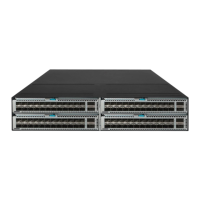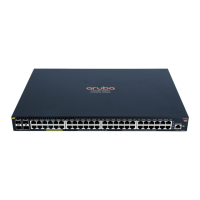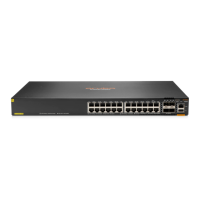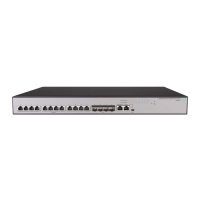393
129B
Configuring routing on an MCE
An MCE implements service isolation through route isolation. MCE routing configuration includes the
following:
• MCE-VPN site routing configuration.
• MCE-PE routing configuration.
On a PE in an MCE network environment, perform the following tasks:
• Disable routing loop detection to avoid route loss during route calculation.
• Disable route redistribution between routing protocols to save system resources.
Before you configure routing on an MCE, perform the following tasks:
• On the MCE, configure VPN instances, and bind the VPN instances to the interfaces connected
to the VPN sites and those connected to the PE.
• Configure the link layer and network layer protocols on related interfaces to ensure IP
connectivity.
308BConfiguring routing between an MCE and a VPN site
You can configure IPv6 static routing, RIPng, OSPFv3, IPv6 IS-IS, or EBGP between an MCE and a
VPN site.
577BConfiguring IPv6 static routing between an MCE and a VPN site
An MCE can reach a VPN site through an IPv6 static route. IPv6 static routing on a traditional CE is
globally effective and does not support address overlapping among VPNs. An MCE supports binding
an IPv6 static route with an IPv6 VPN instance, so that the IPv6 static routes of different IPv6 VPN
instances can be isolated from each other.
To configure IPv6 static routing between an MCE and a VPN site:
Step Command Remarks
1. Enter system view.
system-view
N/A
2. Configure an IPv6
static route for an IPv6
VPN instance.
ipv6 route-static
vpn-instance
s-vpn-instance-name ipv6-address prefix-length
{ interface-type interface-number
[ next-hop-address ] | nexthop-address [
public
] |
vpn-instance
d-vpn-instance-name
nexthop-address } [
permanent
] [
preference
preference ] [
tag
tag-value ] [
description
text ]
By default, no IPv6
static routes are
configured.
Perform this
configuration on the
MCE. On a VPN site,
configure normal IPv6
static routes.
3. (Optional.) Configure
the default preference
for IPv6 static routes.
ipv6 route-static default-preference
default-preference
The default
preference for IPv6
static routes is 60.
578BConfiguring RIPng between an MCE and a VPN site
A RIPng process belongs to the public network or a single IPv6 VPN instance. If you create a RIPng
process without binding it to an IPv6 VPN instance, the process belongs to the public network. By
configuring RIPng process-to-IPv6 VPN instance bindings on a MCE, you allow routes of different
VPNs to be exchanged between the MCE and the sites through different RIPng processes, ensuring
the separation and security of IPv6 VPN routes.
For more information about RIPng, see Layer 3—IP Routing Configuration Guide.

